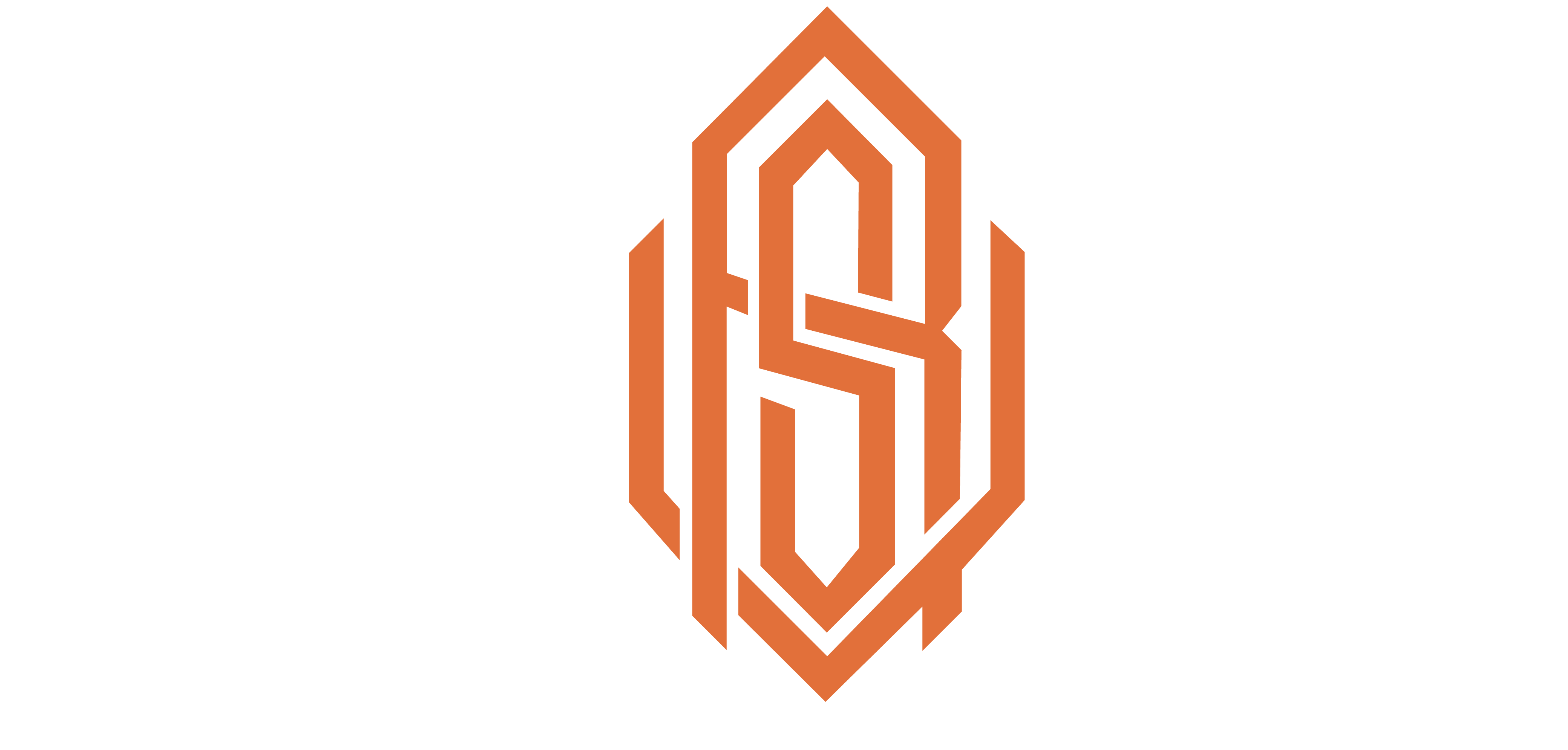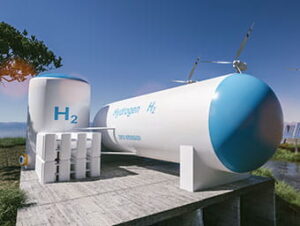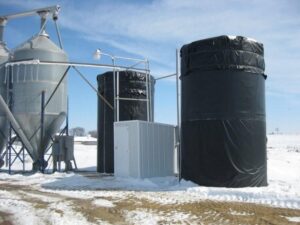Understanding The Cost efficiency is essential for businesses aiming to optimize their financial performance. The Cost efficiency refers to the ability of a company to produce goods or services with the lowest possible expenses while maintaining quality standards. It is a fundamental aspect of financial management and directly impacts a company’s profitability and competitiveness in the market. Visit our SVR Trace to see the best cost efficient products.
One key aspect of understanding the title is analyzing the cost structure of a business. This involves identifying and categorizing all expenses incurred in the production process, including direct costs such as materials and labor, as well as indirect costs like overhead and administrative expenses. By having a clear understanding of where costs are incurred, businesses can identify areas for improvement and cost-saving opportunities. Check our shop for the best heating cables and order now!
Another important concept related to The Cost efficiency is cost-effectiveness. While efficiency focuses on minimizing expenses, cost-effectiveness emphasizes achieving the desired outcome or results at a reasonable cost. It’s not just about cutting costs but also about allocating resources effectively to maximize value. Contact us for more data!
The Cost efficiency is often measured using various financial ratios and metrics such as the cost-to-income ratio, return on investment (ROI), and operating profit margin. These metrics help businesses evaluate their cost management efforts and compare performance over time or against industry benchmarks.
Implementing efficiency strategies involves careful planning and decision-making across all levels of the organization. This may include streamlining processes, adopting technology solutions to automate tasks, renegotiating supplier contracts for better terms, and training employees to be more resourceful and cost-conscious.
In summary, understanding The Cost efficiency requires businesses to have a comprehensive view of their cost structure, prioritize cost-effectiveness, use relevant metrics for measurement, and implement strategic initiatives to optimize costs while maintaining value and quality. By focusing on The Cost efficiency, businesses can enhance their financial health, improve competitiveness, and achieve long-term sustainability.
Visit our blog page for the newest content about industrial products and household products in the field of the radiant floor heating cables!
- How to understand the cost efficiency ?
- What are the Key Factors Influencing Cost Efficiency in Business?
- What are the Cost Efficiency Strategies for Small Businesses?
- What are the Leveraging Technology for Cost Efficiency?
- How to Balance Quality and Cost Efficiency?
- What are the Case Studies?: Successful Cost Efficiency Initiatives
- How to Implement Lean Practices for Cost Efficiency?
- How to Measure and Track Cost Efficiency Metrics ?
- What are the Challenges and Solutions in Achieving Cost Efficiency?
- What are the Future Trends in Cost Efficiency Management?
- These are the questions that will be answered in this article. So lets continue!
Table of contents
- Understanding Cost Efficiency
- Key Factors Influencing Cost Efficiency in Business
- Cost Efficiency Strategies for Small Businesses
- Leveraging Technology for Cost Efficiency
- Balancing Quality and Cost Efficiency
- Case Studies: Successful Cost Efficiency Initiatives
- Implementing Lean Practices for Cost Efficiency
- Measuring and Tracking Cost Efficiency Metrics
- Challenges and Solutions in Achieving Cost Efficiency
- Future Trends in Cost Efficiency Management
- FAQs
- Conclusion and summary
Understanding the Cost Efficiency
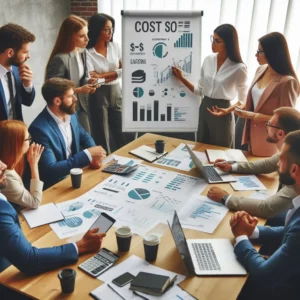
Understanding The Cost efficiency is essential for businesses aiming to optimize their financial performance. The Cost efficiency refers to the ability of a company to produce goods or services with the lowest possible expenses while maintaining quality standards. It is a fundamental aspect of financial management and directly impacts a company’s profitability and competitiveness in the market.
One key aspect of understanding The Cost efficiency is analyzing the cost structure of a business. This involves identifying and categorizing all expenses incurred in the production process, including direct costs such as materials and labor, as well as indirect costs like overhead and administrative expenses. By having a clear understanding of where costs are incurred, businesses can identify areas for improvement and cost-saving opportunities. Check the quality and long term support of heating cables.
Another important concept related to The Cost efficiency is cost-effectiveness. While cost efficiency focuses on minimizing expenses, cost-effectiveness emphasizes achieving the desired outcome or results at a reasonable cost. It’s not just about cutting costs but also about allocating resources effectively to maximize value.
The Cost efficiency is often measured using various financial ratios and metrics such as the cost-to-income ratio, return on investment (ROI), and operating profit margin. These metrics help businesses evaluate their cost management efforts and compare performance over time or against industry benchmarks.
Implementing The Cost efficiency strategies involves careful planning and decision-making across all levels of the organization. This may include streamlining processes, adopting technology solutions to automate tasks, renegotiating supplier contracts for better terms, and training employees to be more resourceful and cost-conscious. These should be held in radiant floor heating too!
In summary, understanding The Cost efficiency requires businesses to have a comprehensive view of their cost structure, prioritize cost-effectiveness, use relevant metrics for measurement, and implement strategic initiatives to optimize costs while maintaining value and quality. By focusing on The Cost efficiency, businesses can enhance their financial health, improve competitiveness, and achieve long-term sustainability.
Key Factors Influencing Cost Efficiency in Business
Key factors influencing The Cost efficiency in business encompass a range of elements that organizations must carefully consider and manage to optimize their financial performance. These factors play a crucial role in determining how effectively a company can minimize expenses while maximizing output and value. Here are some of the key factors influencing The Cost efficiency🙁Hydronic underfloor heating)
1. Technology and Automation:
Embracing technology and automation can significantly enhance The Cost efficiency by streamlining processes, reducing manual errors, and increasing productivity. Automation tools can handle repetitive tasks, freeing up human resources for more strategic activities.
2. Supply Chain Management:
Efficient supply chain management is critical for The Cost efficiency. This includes sourcing materials at competitive prices, managing inventory levels effectively to avoid overstocking or stockouts, and optimizing logistics and distribution channels to minimize transportation costs.
3. Labor Productivity and Training:
Employee productivity directly impacts The Cost efficiency. Investing in training and development programs to enhance skills and knowledge can improve workforce productivity, reduce errors, and boost overall efficiency.
4. Process Optimization:
Analyzing and optimizing business processes can lead to cost savings. This involves identifying bottlenecks, eliminating unnecessary steps, and implementing best practices to streamline operations and reduce wastage of resources.
5. Energy and Resource Management:
Managing energy consumption and resources efficiently can have a significant impact on The Cost efficiency. Implementing energy-saving measures, recycling and waste reduction initiatives, and using sustainable practices can lower operational costs and contribute to environmental sustainability.
6. Financial Management:
Sound financial management practices, including budgeting, cost control measures, and strategic financial planning, are essential for The Cost efficiency. Monitoring expenses, identifying cost-saving opportunities, and making informed financial decisions are key aspects of effective cost management.
7. Supplier Relationships:
Developing strong relationships with suppliers and negotiating favorable terms can lead to cost savings. Leveraging volume discounts, securing long-term contracts, and collaborating with reliable suppliers can lower procurement costs and improve The Cost efficiency.
8. Regulatory Compliance:
Ensuring compliance with regulatory requirements and industry standards is crucial. Non-compliance can result in fines, penalties, and additional costs. Proactively addressing compliance issues and staying updated with regulations can mitigate risks and preserve The Cost efficiency.
By addressing these key factors and implementing strategic initiatives, businesses can enhance their The Cost efficiency, improve profitability, and maintain a competitive edge in the market. Constant monitoring, evaluation, and adaptation to changing business environments are essential for sustaining The Cost efficiency gains over time. Did you visit underfloor heating straps in our shop?
The Cost Efficiency Strategies for Small Businesses

The Cost efficiency strategies are vital for small businesses to thrive in competitive markets while managing limited resources effectively. Implementing the right strategies can help small businesses reduce costs, improve profitability, and achieve long-term sustainability. Here are several The Cost efficiency strategies tailored for small businesses:
1. Budgeting and Financial Planning:
Develop a detailed budget that outlines income, expenses, and financial goals. Regularly review and adjust the budget to ensure optimal allocation of resources and prioritize spending on essential activities that contribute to business growth.
2. Outsource Non-Core Functions:
Consider outsourcing non-core functions such as payroll processing, IT support, or marketing tasks to specialized service providers. Outsourcing can lower costs by eliminating the need for in-house staff and infrastructure while accessing expertise on an as-needed basis.
3. Embrace Technology Solutions:
Leverage technology to automate manual processes, improve efficiency, and reduce costs. Invest in software applications for accounting, inventory management, customer relationship management (CRM), and online collaboration tools to streamline operations and enhance productivity. Good related example could be thermostats and their role in home heating.
4. Negotiate with Suppliers:
Build strong relationships with suppliers and negotiate favorable terms for pricing, discounts, and payment terms. Bulk purchasing, seeking alternative suppliers, and consolidating orders can also lead to cost savings and better value for goods and services procured.
5. Focus on Energy Efficiency:
Implement energy-saving measures such as using energy-efficient lighting, optimizing heating and cooling systems, and reducing waste. Energy-efficient practices not only lower utility costs but also contribute to environmental sustainability.
6. Maximize Employee Productivity:
Invest in employee training and development to enhance skills and productivity. Encourage teamwork, communication, and collaboration to optimize workflow and minimize errors. Implement performance incentives tied to cost-saving initiatives to motivate employees.
7. Monitor and Control Expenses:
Regularly monitor expenses and identify areas where costs can be reduced or eliminated. Implement cost control measures such as setting spending limits, tracking expenses against budgets, and avoiding unnecessary expenditures.
8. Explore Alternative Marketing Channels:
Instead of costly traditional advertising, explore cost-effective digital marketing channels such as social media, email marketing, and search engine optimization (SEO) to reach target audiences and promote products or services.
9. Utilize Flexible Work Arrangements:
Consider offering flexible work arrangements such as remote work or flexible hours to reduce overhead costs associated with office space and utilities while improving employee satisfaction and retention.
10. Continuous Improvement and Innovation:
Foster a culture of continuous improvement and innovation to identify opportunities for cost savings and efficiency enhancements. Encourage feedback from employees and customers, and implement changes that drive value and competitiveness.
By implementing these The Cost efficiency strategies, small businesses can optimize their financial performance, remain agile in dynamic market conditions, and position themselves for sustainable growth and success and also help environment in home heating industry and the environment. Regularly evaluate the effectiveness of these strategies and adapt them as needed to align with changing business needs and market trends.
Leveraging Technology for Cost Efficiency

Leveraging technology for The Cost efficiency is a strategic approach that empowers businesses to optimize operations, streamline processes, and reduce expenses while maintaining or enhancing productivity and quality. In today’s digital era, technological advancements offer a wide range of tools and solutions that can be harnessed to drive The Cost efficiency across various aspects of business operations. Here are several ways businesses can leverage technology for The Cost efficiency🙁parallel silicone heating cable)
1. Automation of Routine Tasks:
Implementing automation software and tools can significantly reduce manual labor, minimize errors, and speed up processes. Tasks such as data entry, invoicing, inventory management, and customer support can be automated, freeing up valuable time and resources for more strategic activities.
2. Cloud Computing:
Adopting cloud-based solutions for storage, collaboration, and software applications can lead to cost savings by eliminating the need for expensive hardware, infrastructure maintenance, and IT support. Cloud computing also offers scalability and flexibility, allowing businesses to pay for only the resources they use.
3. Data Analytics and Business Intelligence:
Utilize data analytics tools to gain insights into business performance, customer behavior, market trends, and cost drivers. By analyzing data effectively, businesses can make data-driven decisions, identify areas for improvement, and optimize processes to reduce costs and improve efficiency.
4. Mobile Technology:
Enable employees to work remotely and access business systems and information on mobile devices. Mobile technology facilitates flexibility, enhances productivity, and reduces overhead costs associated with office space and utilities.
5. Supply Chain Optimization:
Implement supply chain management software and tools to streamline procurement, inventory management, and logistics. Real-time visibility into supply chain operations enables businesses to optimize inventory levels, reduce lead times, and negotiate better terms with suppliers, leading to cost savings.
6. Digital Marketing:
Leverage digital marketing channels such as social media, email marketing, and search engine optimization (SEO) to reach target audiences cost-effectively. Digital marketing campaigns can be tailored to specific demographics, tracked for performance, and adjusted in real time to maximize ROI.
7. Remote Collaboration Tools:
Use collaboration tools such as video conferencing, project management software, and virtual communication platforms to facilitate remote teamwork, reduce travel costs, and improve communication efficiency among teams and stakeholders.
8. Cybersecurity Measures:
Invest in robust cybersecurity measures to protect sensitive data, systems, and networks from cyber threats and breaches. The cost of cyber attacks and data breaches can be significant, and proactive cybersecurity measures are essential for mitigating risks and preserving The Cost efficiency.
By strategically leveraging technology, businesses can unlock cost-saving opportunities, enhance operational efficiency, and gain a competitive edge in today’s digital business landscape. It’s important to assess the specific needs and goals of the business, choose technology solutions that align with these objectives, and continuously evaluate and optimize technology investments to drive sustainable The Cost efficiency gains over time. Check the blog: A brief history of home heating
Balancing Quality and Cost Efficiency
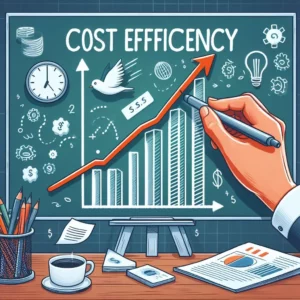
Balancing quality and The Cost efficiency is a delicate yet crucial endeavor for businesses across industries. While The Cost efficiency focuses on minimizing expenses and maximizing profitability, maintaining high-quality standards is equally essential to meet customer expectations, build brand reputation, and sustain long-term success. Achieving this balance requires a strategic approach that considers both financial constraints and quality objectives. Here are key strategies for balancing quality and The Cost efficiency: (excellent products: heat tracing cables)
1. Define Quality Standards:
Clearly define quality standards and expectations for products or services based on customer needs, industry benchmarks, and regulatory requirements. Quality should encompass aspects such as performance, reliability, durability, safety, and customer satisfaction.
2. Cost-Effective Processes:
Identify cost-effective processes and methods that do not compromise quality. This may involve streamlining workflows, optimizing resource utilization, eliminating waste, and leveraging technology to automate tasks and reduce overhead costs.
3. Supplier Relationships:
Build strong relationships with suppliers and partners who can provide high-quality materials, components, or services at competitive prices. Negotiate favorable terms, monitor supplier performance, and collaborate on continuous improvement initiatives to ensure quality and The Cost efficiency throughout the supply chain.
4. Employee Training and Engagement:
Invest in employee training and development to enhance skills, knowledge, and commitment to quality. Engage employees in quality improvement initiatives, empower them to identify and address quality issues, and recognize and reward contributions to quality and The Cost efficiency.
5. Continuous Improvement:
Implement a culture of continuous improvement that encourages feedback, innovation, and learning from successes and failures. Use quality management tools and methodologies such as Six Sigma, Total Quality Management (TQM), and Kaizen to identify opportunities for improvement, address root causes of quality issues, and optimize processes for The Cost efficiency.
6. Customer Feedback and Satisfaction:
Gather feedback from customers regularly to understand their expectations, preferences, and satisfaction levels regarding product quality and value. Use customer insights to make data-driven decisions, prioritize quality improvements, and enhance overall customer experience.
7. Risk Management:
Assess and mitigate risks that could impact quality and The Cost efficiency, such as supply chain disruptions, quality control issues, and compliance challenges. Develop contingency plans, monitor key risk indicators, and proactively address potential threats to minimize adverse effects on quality and costs.
8. Benchmarking and Performance Measurement:
Benchmark against industry peers and competitors to gauge performance in terms of both quality and The Cost efficiency. Use key performance indicators (KPIs) and metrics to track progress, identify areas for improvement, and make data-driven decisions to achieve the optimal balance between quality and The Cost efficiency.
By implementing these strategies and adopting a holistic approach that integrates quality considerations into cost management practices, businesses can achieve a sustainable balance that maximizes value for customers, stakeholders, and the organization as a whole. Flexibility, agility, and continuous adaptation to changing market dynamics and customer needs are essential for maintaining this balance over time. One might interest you: the best underfloor heating film.
Case Studies: Successful Cost Efficiency Initiatives
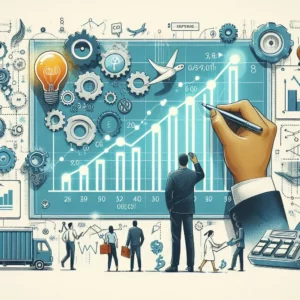
Case studies showcasing successful The Cost efficiency initiatives provide valuable insights into real-world strategies and tactics that businesses have implemented to achieve significant cost savings while maintaining or improving performance. These case studies highlight innovative approaches, best practices, and lessons learned that can inspire and guide other organizations seeking to enhance their The Cost efficiency. Here are examples of successful The Cost efficiency initiatives from various industries:
1. Retail Sector:
A leading retail chain implemented a comprehensive The Cost efficiency program that included optimizing inventory management, reducing waste, renegotiating supplier contracts, and implementing energy-saving measures in stores. This initiative resulted in a 15% reduction in operating costs and improved profit margins.
2. Manufacturing Industry:
A manufacturing company adopted lean manufacturing principles and invested in automation technologies to streamline production processes, minimize downtime, and reduce labor costs. As a result, production efficiency increased by 20%, and overall manufacturing costs decreased by 12%.
3. Healthcare Organization:
A healthcare organization implemented a The Cost efficiency initiative focused on reducing administrative overhead, optimizing resource allocation, and improving patient care processes. By centralizing administrative functions, leveraging digital health records, and standardizing clinical protocols, the organization achieved a 25% reduction in operational costs without compromising patient outcomes.
4. Technology Company:
A technology company leveraged cloud computing and virtualization solutions to optimize IT infrastructure, reduce hardware and maintenance costs, and improve scalability and flexibility. This initiative resulted in a 30% reduction in IT expenses and faster deployment of new applications and services.
5. Service Sector:
A professional services firm implemented a telecommuting policy and flexible work arrangements to reduce office space requirements, lower utility costs, and improve employee satisfaction and retention. This initiative led to a 20% reduction in facilities expenses and increased productivity among remote workers.
These case studies demonstrate that successful The Cost efficiency initiatives require strategic planning, cross-functional collaboration, innovation, and a commitment to continuous improvement. By learning from these examples and tailoring strategies to their specific needs and challenges, businesses can achieve significant cost savings, enhance competitiveness, and achieve long-term sustainability. Like one used in drain-line heating cable.
Implementing Lean Practices for Cost Efficiency
Implementing lean practices is a powerful strategy for improving The Cost efficiency in businesses across various industries. Lean principles focus on eliminating waste, optimizing processes, and maximizing value for customers, all of which contribute to reducing costs while enhancing productivity and quality. Here are key aspects of implementing lean practices for The Cost efficiency. Related blog: Industry and underfloor heating systems
1. Identify and Eliminate Waste:
Conduct a thorough analysis of business processes to identify inefficiencies, bottlenecks, and non-value-added activities. Common types of waste in lean practices include overproduction, excess inventory, unnecessary waiting times, and defects. By eliminating waste, businesses can reduce costs and improve efficiency.
2. Streamline Workflows:
Streamline workflows and standardize processes to reduce variation and increase predictability. Implement lean tools such as value stream mapping, 5S (Sort, Set in Order, Shine, Standardize, Sustain), and Kaizen (continuous improvement) to optimize workflows, minimize lead times, and enhance productivity.
3. Empower Employees:
Empower employees at all levels to contribute ideas, identify improvement opportunities, and participate in problem-solving initiatives. Create a culture of continuous improvement where employees are encouraged to suggest and implement cost-saving measures and efficiency enhancements.
4. Optimize Resource Utilization:
Optimize the use of resources, including labor, materials, equipment, and space, to minimize waste and maximize value. Implement just-in-time (JIT) inventory management, systems, and pull-based production to reduce excess inventory and storage costs.
5. Focus on Value-Added Activities:
Prioritize value-added activities that directly contribute to meeting customer needs and generating revenue. Eliminate or reduce non-value-added activities that consume resources without delivering meaningful value to customers.
6. Supplier Collaboration:
Collaborate closely with suppliers to improve supply chain efficiency, reduce lead times, and negotiate favorable terms. Implement supplier development programs, establish clear communication channels, and build strong relationships based on trust and mutual benefit.
7. Continuous Monitoring and Improvement:
Continuously monitor key performance indicators (KPIs) related to The Cost efficiency, quality, and productivity. Use data and feedback to identify areas for improvement, track progress, and make data-driven decisions to sustain and enhance lean practices over time.
By implementing lean practices effectively, businesses can achieve significant cost savings, improve operational performance, and enhance customer satisfaction. It requires commitment, leadership support, employee engagement, and a systematic approach to identifying and implementing lean solutions tailored to the organization’s unique challenges and objectives. More titles: household underfloor heating
Measuring and Tracking the Cost Efficiency Metrics
Measuring and tracking The Cost efficiency metrics is essential for businesses to assess their financial performance, identify areas for improvement, and make informed decisions to optimize costs and enhance profitability. The Cost efficiency metrics provide valuable insights into how effectively resources are utilized and managed to achieve desired outcomes. Here are key considerations for measuring and tracking The Cost efficiency metrics. Like ones in The health benefits of underfloor heating systems.
1. Identify Relevant Metrics:
Determine which The Cost efficiency metrics are most relevant to your business goals and objectives. Common The Cost efficiency metrics include cost-to-income ratio, operating profit margin, return on investment (ROI), cost per unit produced, labor productivity, and overhead cost per unit.
2. Set Benchmarks and Targets:
Establish benchmarks and targets for each The Cost efficiency metric based on industry standards, historical data, and performance goals. Benchmarking allows businesses to compare their performance against peers and identify areas where improvements are needed.
3. Implement Tracking Systems:
Implement robust tracking systems and tools to capture and analyze The Cost efficiency data accurately and efficiently. Use accounting software, financial dashboards, and performance management systems to track key metrics in real time and generate reports for analysis.
4. Monitor Key Performance Indicators (KPIs):
Monitor key performance indicators (KPIs) related to The Cost efficiency on a regular basis. KPIs such as cost variance, cost control effectiveness, cost-saving initiatives, and cost reduction trends provide insights into cost management efforts and help measure progress towards The Cost efficiency goals.
5. Conduct Regular Reviews and Analysis:
Conduct regular reviews and analysis of The Cost efficiency metrics to identify trends, patterns, and areas of improvement. Analyze variances from targets, investigate root causes of cost overruns or inefficiencies, and take corrective actions as needed.
6. Communicate and Share Results:
Communicate The Cost efficiency metrics and performance results across the organization to ensure transparency, accountability, and alignment with strategic objectives. Engage stakeholders, share best practices, and celebrate successes to foster a culture of cost consciousness and continuous improvement.
By measuring and tracking The Cost efficiency metrics effectively, businesses can gain valuable insights into their financial health, identify opportunities for cost savings and optimization, and make data-driven decisions to enhance overall performance and competitiveness. Regular monitoring, analysis, and continuous improvement are key to sustaining The Cost efficiency gains over time. More information about cost efficiency metrics.
FAQs
Here is a FAQs text with 8 questions and answers:
1. What is The Cost efficiency, and why is it important for businesses?
– The Cost efficiency refers to the ability of a business to achieve its objectives using the least amount of resources possible. It is important for businesses because it directly impacts profitability, competitiveness, and sustainability.
2. What are some common The Cost efficiency strategies that businesses can implement?
– Some common The Cost efficiency strategies include optimizing processes, reducing waste, leveraging technology, negotiating with suppliers, implementing lean practices, and focusing on value-added activities.
3. How can technology be leveraged to improve The Cost efficiency in organizations?
– Technology can be leveraged to improve The Cost efficiency by automating tasks, streamlining workflows, reducing manual errors, enhancing productivity, optimizing resource utilization, and providing real-time data for informed decision-making.
4. What role does employee training and engagement play in achieving The Cost efficiency?
– Employee training and engagement play a crucial role in achieving The Cost efficiency by improving skills, knowledge, and motivation. Engaged employees are more likely to contribute ideas, identify cost-saving opportunities, and actively participate in continuous improvement initiatives.
5. How can businesses measure and track The Cost efficiency metrics effectively?
– Businesses can measure and track The Cost efficiency metrics effectively by identifying relevant metrics, setting benchmarks and targets, implementing tracking systems, monitoring key performance indicators (KPIs), conducting regular reviews and analysis, and communicating results across the organization.
6. What are the potential benefits of implementing lean practices for The Cost efficiency?
– Implementing lean practices can lead to benefits such as reduced waste, improved productivity, streamlined processes, better quality, lower costs, increased customer satisfaction, and a culture of continuous improvement.
7. How can businesses balance quality and The Cost efficiency effectively?
– Businesses can balance quality and The Cost efficiency effectively by defining clear quality standards, optimizing processes, empowering employees, leveraging technology, monitoring performance, and continuously improving processes and products.
8. What are some successful case studies of companies implementing The Cost efficiency initiatives?
– Successful case studies of companies implementing The Cost efficiency initiatives include retail chains optimizing inventory management, manufacturing companies adopting lean practices, healthcare organizations reducing administrative overhead, technology firms leveraging cloud computing, and service sectors implementing remote work policies for cost savings.
Conclusion

In conclusion, The Cost efficiency is a critical aspect of business management that directly impacts profitability, competitiveness, and sustainability. By adopting The Cost efficiency strategies, leveraging technology, optimizing processes, and balancing quality considerations, businesses can achieve significant cost savings, improve operational performance, and enhance customer satisfaction.
Employee training and engagement play a vital role in The Cost efficiency initiatives, as motivated and skilled employees contribute to identifying cost-saving opportunities and driving continuous improvement. Additionally, measuring and tracking The Cost efficiency metrics effectively enables businesses to monitor progress, identify areas for improvement, and make data-driven decisions to optimize costs and enhance financial performance.
Successful implementation of The Cost efficiency initiatives requires leadership commitment, cross-functional collaboration, and a culture of continuous improvement. Learning from successful case studies and industry best practices can provide valuable insights and inspiration for businesses seeking to enhance their The Cost efficiency and achieve long-term success in today’s dynamic business environment.(Open space heating and heating cables)
Ultimately, The Cost efficiency is not just about reducing expenses but also about maximizing value, optimizing resources, and maintaining a competitive edge. By prioritizing The Cost efficiency as a strategic priority, businesses can navigate challenges, seize opportunities, and thrive in an ever-evolving marketplace.
